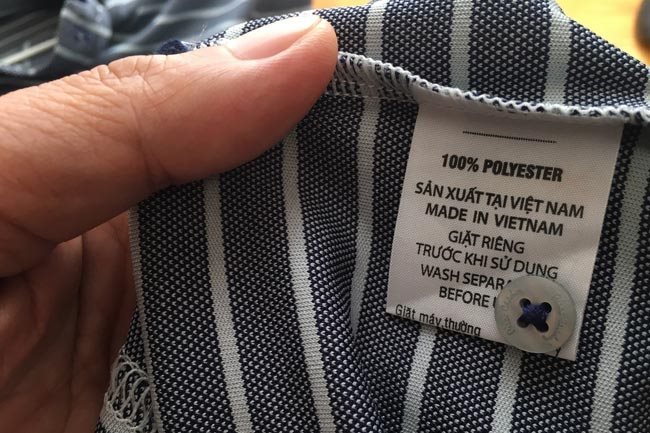 |
|
A T-shirt bears a Made-in-Vietnam label. The Ministry of Industry and Trade is collecting feedback for a draft circular on the criteria for determining which products and goods are made in Vietnam
|
The draft circular is mainly based on the rules of origin, which are being applied to exports from Vietnam, including the Government’s Decree 31/2018 detailing the Law on Foreign Trade Management on the origin of goods.
The methods used to determine the origin of goods cover wholly obtained goods, regional value content and the harmonized commodity description and coding system, also known as the harmonized system of the World Customs Organization.
Individuals and organizations take their production and outsourcing processes into account when using phrases such as “Product of Vietnam,” “Vietnamese goods,” “Made in Vietnam,” “Manufactured in Vietnam,” or “Created in Vietnam” on their goods’ labels.
The goods are listed as Vietnamese products if they are wholly obtained or produced in Vietnam or if they are not wholly produced or obtained products but have completed their final production or processing stages in the country, creating fundamental changes in the nature of the products.
The goods couldn’t bear Vietnamese origin labels if they have one or more processing or outsourcing stages that are deemed “simple.”
For example, product preservation tasks take place during the transport and storage processes. A number of tasks, such as dusting, screening, selection, classification, cleaning, painting and splitting items apart are also on the list.
Other tasks include changing packages, dismantling or assembling shipments, basically mixing products of the same or different types, simple assembly of spare parts to create finished products, and animal slaughter.
The draft decree states that goods temporarily imported into Vietnam for re-export and goods transshipped through or transiting Vietnam are not regarded as Vietnamese products.
According to the ministry, firms will not incur extra costs under the new decree, as requirements on labeling goods and determining the country of origin have long been mandatory, in line with the Government’s Decree 43/2017 on the labeling of goods.
“This circular gives individuals and organizations the tools to comply with the requirements of Decree 43 and eliminates accidental or intentional violations of regulations on country of origin labeling,” the ministry said.
The ministry added that genuine businesses will not face the risk of being accused of origin fraud, thereby avoiding the threat of litigation and the erosion of consumer trust.
Together with the strict execution of Decree 43 at border gates, the new circular will also help phase out exports that have been disguised as made-in-Vietnam products.
28 firms inspected in Asanzo’s alleged origin fraud case
Deputy Minister of Finance Vu Thi Mai said at a press briefing in Hanoi on August 1 that authorities are looking into 28 firms whose import and export activities are connected with the product labeling dispute involving local electronics producer Asanzo Vietnam.
She added that they are also working with local supermarkets, retailers and the Business Association of High Quality Vietnamese Goods to verify information related to the case.
Moreover, the Ministry of Finance is coordinating with tax agencies to examine Asanzo’s transactions.
The ministry is taking drastic steps to investigate the allegations of origin fraud and will release its findings once enough information is gathered, noted the official.
The ministries of public security, science and technology and finance are investigating allegations that Asanzo committed product origin fraud. Their conclusions will be released on August 30. SGT
 The Ministry of Industry and Trade is seeking feedback for a draft circular specifying the criteria for recognizing products and goods that are made in Vietnam.
The Ministry of Industry and Trade is seeking feedback for a draft circular specifying the criteria for recognizing products and goods that are made in Vietnam.